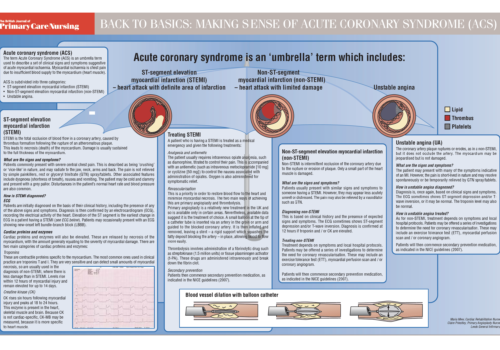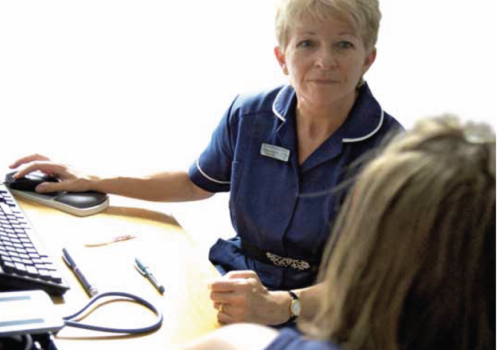We’re recommended to eat a maximum of a teaspoon a day but nearly all of us eat more. Salt provides sodium which is needed in small amounts for maintaining water balance and is used in nerve activity – but too much can lead to serious health complications. How can we help our patients to cut down on their salt intake?
Chronic Wounds: Optimising Wound Management
Practice and other community-based nurses play a central role in achieving high quality wound care in patients treated initially in general practice and in those who have been discharged from hospital. This article summarises some of the wound management products available for chronic wounds, and the importance of continued wound care in the primary care setting, before focusing on one of the latest approaches – total negative pressure (TNP).
Winning the Flu Immunisation Campaign
Back to Basics: Making sense of acute coronary syndrome (ACS)
Editorial
“It is no use saying ‘We are doing our best.’ You have got to succeed in doing what is necessary.” So said Winston Churchill. His approach helped win the Second World War, and applies just as well to the war we fight every day against cardiovascular disease.
Diabetes Control During Ramadan: How to Advise our Patients
Fasting is obligatory for all Muslim men and boys over the age of 12 and for Muslim women and girls who have passed puberty. It requires that no food or drink pass the lips during the hours of daylight, including medication – oral or inhaled. Not eating or being unable to take medication during the daytime obviously has major implications for people with diabetes. In this article we review how we should advise our patients – how can they maintain control of their diabetes at the same time as honouring their religious obligations?
Blood Clotting: How do Drugs Affect it?
Haemostasis is essentially the fine balance between activators and inhibitors that control the production of the protein tangle that makes up a blood clot. A range of drugs can interfere with this fine balance. In this article we guide you through the latest theories of how blood clotting occurs and explain how various drugs used as anticoagulants interfere with this normal haemostatic mechanism.
You and Your Treatment: Starting on Metformin
Polycystic Ovary Syndrome (PCOSs): Where Metabolic Syndrome Meets Gynaecology
Polycystic ovary syndrome (PCOS) is a complex and distressing life-long condition. It is the commonest endocrine disorder among women of reproductive age, affecting 5-15% of women. PCOS causes short-term effects due to hormonal imbalance as well as longterm effects relating to underlying insulin resistance and consequent hyperinsulinaemia, a form of metabolic syndrome. How can we achieve effective reduction of risk factors in these women to prevent premature cardiovascular disease?
Portfolio Diet
The consistency and magnitude of cholesterol lowering achieved following the introduction of statins has resulted in less importance being given to long-term diet-based interventions over the past few years. Nevertheless, lifestyle changes are, and will remain, the preferred option before resorting to long-term drug therapy. They are also essential in people below the cut-off cholesterol level for drug treatment or where side-effects limit drug use. This article reviews the portfolio diet and its role in cholesterol management.
Stable Angina: Making the Most of Cardiac Function
Stable angina is very common. Just under two million people in the UK – over one million men and 840,000 women – have, or have had, angina. In this article we review how new-onset stable angina is assessed, including an update on new investigations, and the latest treatment options including drugs and interventions, based on the most up-to-date guidelines and current practice.
What Happens In Phase III Cardiac Rehabilitation?
The aim of cardiac rehabilitation is to help people who have had a cardiac event recover and resume as full a life as possible and help reduce the risk of further cardiac problems. The ‘cardiac hope and confidence programme’ is a good way of describing the rehabilitation process as many patients tell us that this is what they gain most from the programme. We review what happens in phase III cardiac rehabilitation and what it can achieve in practice.






















